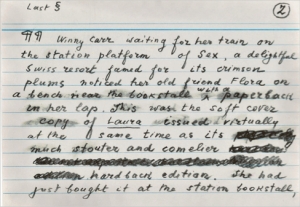 You’ll notice that there’ve been more book cover posts than reviews recently – I’m currently plodding my way through Lauren Beukes’s The Shining Girls (not the easiest read of my life) and trying to avoid reviewing books from last year. But anyway, I thought this new Charlie and the Chocolate Factory cover warranted a mini post since everyone seems to be talking/complaining about it.
You’ll notice that there’ve been more book cover posts than reviews recently – I’m currently plodding my way through Lauren Beukes’s The Shining Girls (not the easiest read of my life) and trying to avoid reviewing books from last year. But anyway, I thought this new Charlie and the Chocolate Factory cover warranted a mini post since everyone seems to be talking/complaining about it.
I think a lot of the criticisms of this cover are just knee-jerk responses: ‘It’s not as good as Quentin Blake’, ‘What does it have to do with the story?’, ‘It’s pornographic!’, ‘It’s supposed to be a children’s book, this isn’t appropriate’. There’s obviously some basis to these critiques, but mostly they seem to be coming from old Roald Dahl fans – those familiar with the old Quentin Blake version. Some people just don’t like change. Certainly, it’s different to the covers illustrated by Quentin Blake, but is different always bad? It’s arguably a more mature cover, but, as many people have said already, the content of the book is very mature. Instead of trying to downplay the explicitness of the content with a younger cover, we need to be more aware of the ability for young readers to digest mature content. This can be seen across all kinds of media: film, music, books and games. But anyway, that’s a topic for another day…
As for it having ‘nothing to do with the story’, I disagree. The story explores the nature of children who have been spoiled and ruined by their parents – it’s about children, family and the relationship between the two. The cover represents that perfectly. Also, I don’t see how this could be inappropriate, and people who think it’s more closely linked to Lolita are out of their minds. Just because there’s a little blonde girl on the cover. Sigh.
All that being said, I don’t particularly like it. I prefer the Quentin Blake covers. But this all just comes down to modernisation, and targeting new readers and new markets. If you don’t like the cover, you don’t like the cover. I think this one just comes down to personal taste. Like it or lump it.

















